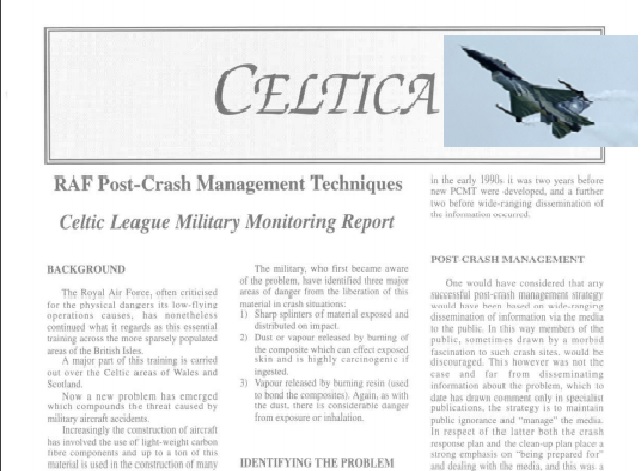Breizh: Military jet crash highlights Post Crash Management Techniques issue
News from the Celtic League:
The BBC highlights a crash by a Belgian military jet in Brittany (near Lorient). The incident was sensational in that one of the aircrew who ejected was trapped on high voltage wires. He has since been rescued safely.
French military authorities were quick to highlight that the aircraft in question posed no danger to the public as, although it burned on impact, it was not carrying munitions. However as Celtic League revealed in 1995 the real danger posed by crashes of this nature is from the potential for tiny carcinogenic filaments of the carbon fibre used in modern jet aircraft to contaminate a vast swathe of area to the downside of the crash site, especially if the aircraft burns on impact.
In 1994 Celtic League as part of its Military Monitoring became aware of confidential briefing to Civil and Military authorities in the United Kingdom about post site crash management. The RAF had first become aware of the danger and pollution risks following a crash of an RAF Harrier jet on the Island of Moers in Denmark in October 1990.
We eventually published a pamphlet on this in the Celtic League magazine CARN (Summer 1995 issue pages 21/22) entitled RAF POST CRASH MANAGEMENT TECHNIQUES (PCMT):
https://www.celticleague.net/wp-content/uploads/2010/01/Carn%2090%20Summ...
It is accepted procedure now that decontamination of the site may require removal of contaminated topsoil. Let's hope the French military are up to scratch with PCMT best practice!
Image: Screen print from CARN 90 - Inset F-16
Bernard Moffatt
Celtic League Military Monitoring







